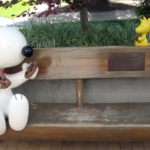It happens nearly every day for me. It’s the inevitable conversation about the demise of organized religious activities, specifically local church attendance and giving.
 Bill WilsonThe vultures are gathering to feast on the carcass of the local church. Clergy and lay leaders are wringing their hands. Is there any hope? The sobering statistics and gloomy projections make most of us long for some good news.
Bill WilsonThe vultures are gathering to feast on the carcass of the local church. Clergy and lay leaders are wringing their hands. Is there any hope? The sobering statistics and gloomy projections make most of us long for some good news.
Well, here you go. I see some encouraging signs and trends for congregational life in the 21st century. Here are some thoughts to get the conversation going:
• The boomer generation transitioning to retirement is going to provide opportunities for churches that prepare well for them.
Much congregational angst is expended on the question of how to attract young adults and young families. Truthfully, aging congregations primarily internally focused and dedicated to maintaining programs, facilities and dated staffing structures are highly unlikely to make the radical shifts required to be relevant to large numbers of young adults.
Such congregations are much more likely to reshape themselves to be relevant to the masses of senior adults in their community. While still welcoming the occasional twentysomething who walks into the church, congregations would be wise to invest in the fastest-growing age group in their community. This is much more, by the way, than taking senior adults on church-organized vacations or gathering to hear bad music once a month. Relevant ministry with this age group is complex, diverse and demands excellence.
The demographic data about the surge in retirees may be welcome news to such congregations. The population of the United States is aging rapidly, and congregations that pay attention to the boom in senior adults may be able to provide meaningful outreach and ministry for this overlooked age group.
• Congregations that have been divided by worship style are reuniting.
Thom Rainer recently noted something many of us have recognized for several years: Dividing a congregation along musical preference lines has negative consequences that many have downplayed. When the multiple worship style fads erupted among traditional worship congregations 15 years ago, it was based upon the assumption that traditional worship formats and their leaders were increasingly irrelevant to younger constituents. In an effort to remain relevant and appeal to young adults, many congregations started a “contemporary service” as a means of reaching this age group.
Sign up for our weekly edition and get all our headlines in your inbox on Thursdays
While some of these efforts were successful, the unintended consequences were legion. Divided churches, poor music and half-empty worship spaces often resulted.
As we have grown in our appreciation for musical diversity, and as a generation of musical leaders who were the most resistant to change age off the scene, a more rational and logical approach to worship is emerging. This is a very encouraging and hopeful development.
• The population is returning to the city center, and the churches that stayed there are perfectly positioned for that surge.
Nearly every medium to large city I travel to is experiencing a boom in population in the center of the city. The rush to the suburbs has been replaced by a documentable tsunami of population growth in urban areas. Suburban sprawl is giving way to the new urban growth boom. For the first time since the 1920s, American city centers are growing faster than the suburbs. It’s not just anecdotal; the statistics are impressive. See here and here.
Over the last few weeks, I’ve talked with congregations who are watching this unfold in Charlotte, Louisville, Greenville, Atlanta, Nashville, Richmond, Greensboro, Orlando, Pensacola, Dallas, Fort Worth and Kansas City. The energy and growth and excitement are in the city center. The suburban growth wave has peaked, and people are coming back downtown to live.
Unfortunately, many churches long ago abandoned the city center. A North American Mission Board church planter recently shared with me that, in 1965, there were 166 Southern Baptist churches inside the I-285 beltway of Atlanta. Today, there are 37. Of those 37, only 13 average more than 100 people in worship.
I see an immense opportunity. The city center is re-emerging as a dynamic center of life, and churches that stayed in the city are perfectly positioned to become part of that fabric. One warning: The new urbanites are very different from their predecessors and will demand creativity and innovation from established churches in order to get their attention. “Business as usual” will only hasten the demise.
• The rediscovery of the neighborhood as our mission.
The missional church movement is forcing us to think beyond patriarchal mission endeavors. One fascinating trend I am heartened by is to see local churches take ownership of their neighborhood as a primary component of their missional strategy. The energy and innovation in churches that take seriously their call to their community is palpable and transformative. You’ll find many resources and encouragement for this important shift in attention.
So, when the talk turns negative about the church, these trends—and others—make me say with enthusiasm: “There has never been a better time to be a church on a mission!” How about you?
Bill Wilson is director of The Center for Healthy Churches in Winston-Salem, N.C. His column is distributed by ABPnews/Herald.














We seek to connect God’s story and God’s people around the world. To learn more about God’s story, click here.
Send comments and feedback to Eric Black, our editor. For comments to be published, please specify “letter to the editor.” Maximum length for publication is 300 words.